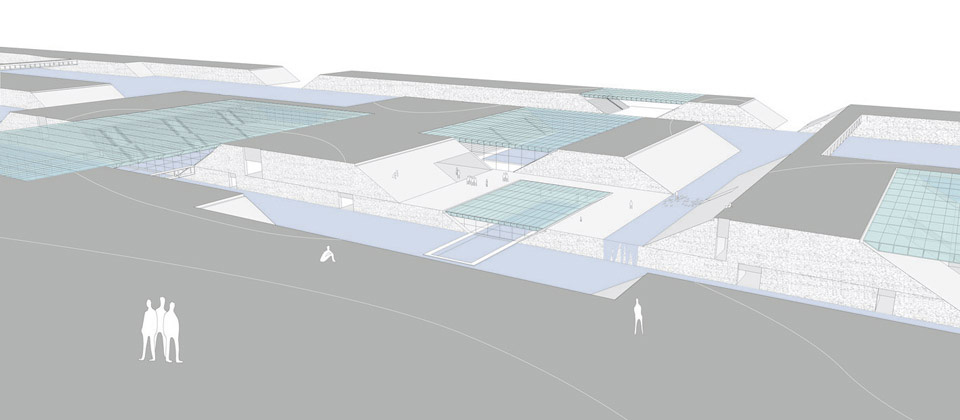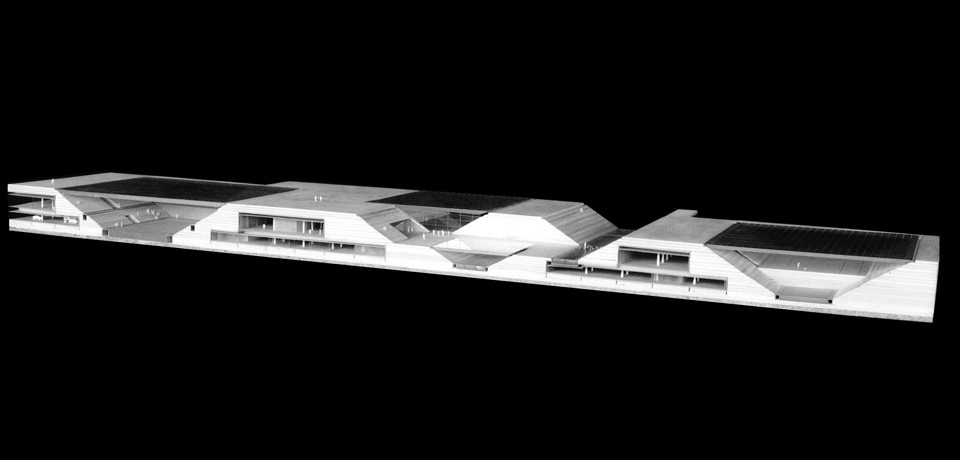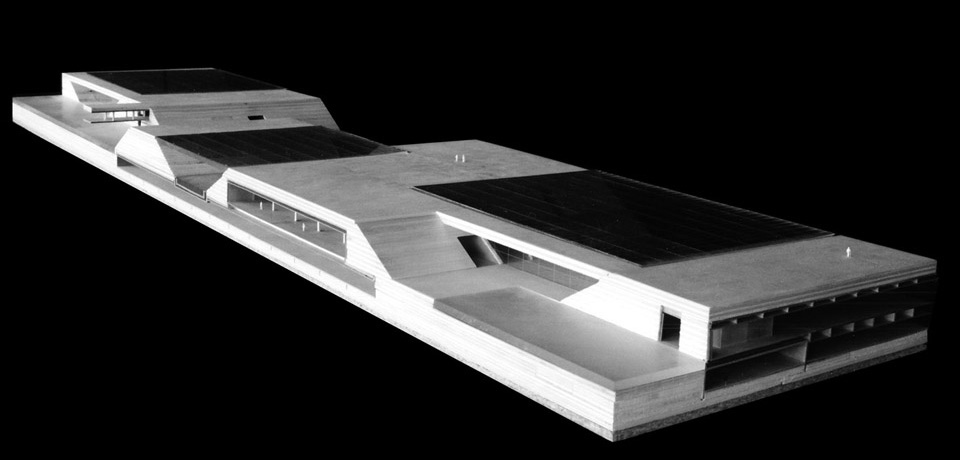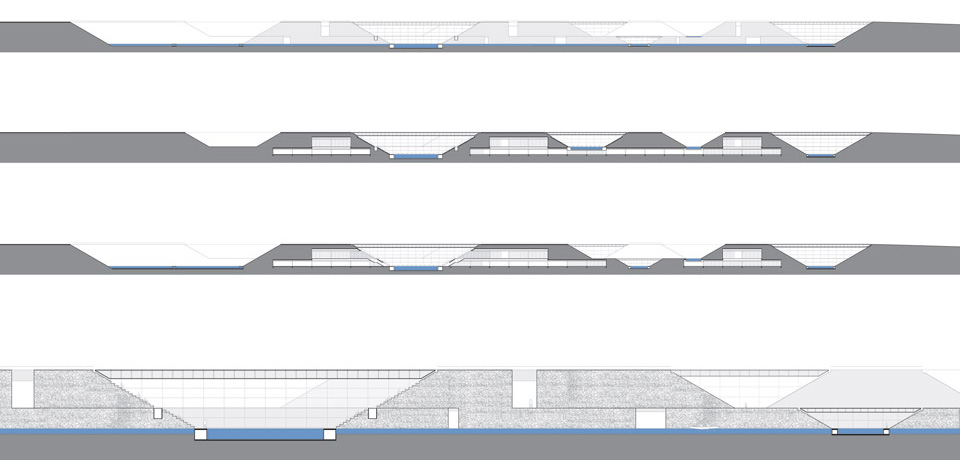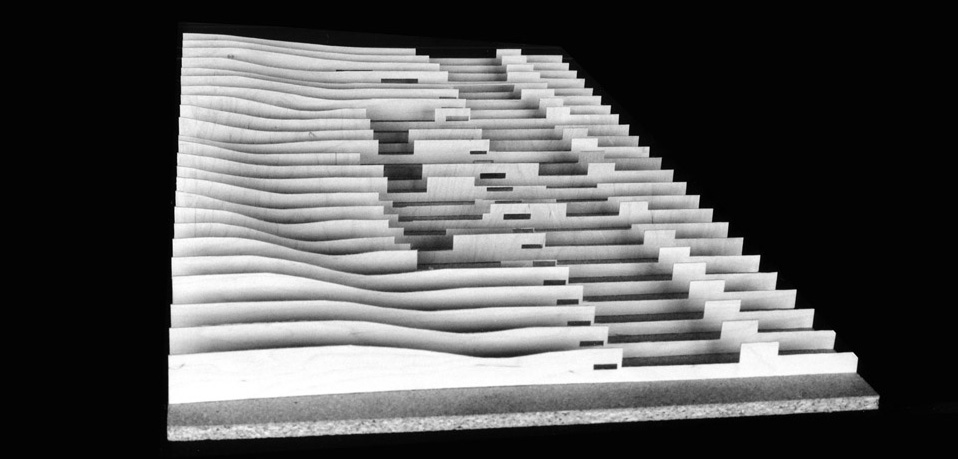Aquatic Landscape Neckar deals with the conflict of cultivated landscape and nature in the city.
For years the city of Stuttgart has discussed whether to reactivate the riverside of the Neckar as recreational area or to extend the nearby sports facilities, thus allowing for further urbanisation.
Whereas a centre for water sports is urgently needed to hold big sport events, planning also seeks to revitalise the banks as an alluvial meadow and to tunnel the highway B10 to give the river a more “natural” image.
The project solves this conflict by interpreting the canalised river as artificial landscape, proposing a corresponding piece of archi-nature.
Taking into account further human modifications such as the tunnel as well as the fact that a natural eco-system will never develop due to the nearby lock (which does not allow changes in water level of more than ±10cm), the project does not create a piece of pseudo-nature, but realistically shows its artificial character.
First element is a second basin, which as a piece of land art interprets the river’s artificiality and at the same time serves as a filter for the swimming pools. In depth it goes back to the river’s original bed before the canalisation.
The river and its twin basin are considered as negative cuts, the park becoming the actual positive. A second category of trapezoidal negatives cross-weaves with the two big basins, reminding of Michael Heizers “Double Negative”. They contain the swimming pools (warm-up, competition, diving, non-swimmers, rowing, ice-hockey…) with their water levels bound to the river/the basin. A landscape of valleys and hills is created with the slopes being the stands.

